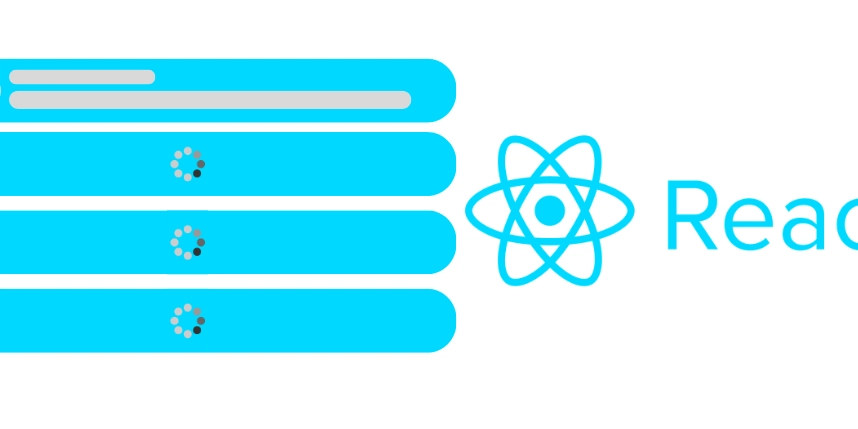React Lazy Loading: Boosting Performance with Code Splitting
As React applications grow, large JavaScript bundles can slow down initial page loads, leading to poor user experience. Lazy loading is a technique that helps mitigate this issue by loading components only when needed, improving performance and reducing unnecessary resource consumption. In this blog, we'll explore React's built-in lazy loading capabilities and how to implement them effectively using React.lazy and Suspense. What is Lazy Loading? Lazy loading is a design pattern that defers the loading of non-essential resources until they are required. In React, this means loading components only when they are needed, instead of including them in the initial JavaScript bundle. Benefits of Lazy Loading Faster Initial Load: Only essential components are loaded upfront. Reduced Bundle Size: Splitting code into smaller chunks makes the app more efficient. Optimized Performance: Improves time-to-interactive, enhancing user experience. Implementing Lazy Loading in React Using React.lazy() React provides the React.lazy function to dynamically import components. It returns a Promise-based component that loads only when needed. Example: import React, { Suspense } from "react"; const lazyComponent = React.lazy(() => import("./LazyComponent")); function App() { return ( React Lazy Loading Example ); } export default App; Explanation: React.lazy(() => import("./LazyComponent")): Dynamically imports the component. Suspense: Provides a fallback UI (e.g., Loading...) until the lazy component is fully loaded. Best Practices for Lazy Loading Use Suspense for a Better UX: Provide a meaningful fallback UI (e.g., a spinner or skeleton loader). Group Related Components: Avoid excessive splitting by grouping related components. Preload Critical Components: Use dynamic imports to preload components that might be required soon. Combine with Code Splitting: Use Webpack's code-splitting and tools like Loadable Components for advanced performance optimization. Conclusion Lazy loading in React is a powerful feature that significantly enhances performance by reducing initial load time and optimizing resource usage. By leveraging React.lazy and Suspense, developers can efficiently manage their application's bundle size while maintaining a smooth user experience. Start implementing lazy loading in your React projects today and experience a noticeable improvement in performance!

As React applications grow, large JavaScript bundles can slow down initial page loads, leading to poor user experience. Lazy loading is a technique that helps mitigate this issue by loading components only when needed, improving performance and reducing unnecessary resource consumption.
In this blog, we'll explore React's built-in lazy loading capabilities and how to implement them effectively using React.lazy and Suspense.
What is Lazy Loading?
Lazy loading is a design pattern that defers the loading of non-essential resources until they are required. In React, this means loading components only when they are needed, instead of including them in the initial JavaScript bundle.
Benefits of Lazy Loading
- Faster Initial Load: Only essential components are loaded upfront.
- Reduced Bundle Size: Splitting code into smaller chunks makes the app more efficient.
- Optimized Performance: Improves time-to-interactive, enhancing user experience.
Implementing Lazy Loading in React
Using React.lazy()
React provides the React.lazy function to dynamically import components. It returns a Promise-based component that loads only when needed.
Example:
import React, { Suspense } from "react";
const lazyComponent = React.lazy(() => import("./LazyComponent"));
function App() {
return (
React Lazy Loading Example
Loading... }>
Explanation:
React.lazy(() => import("./LazyComponent")): Dynamically imports the component.
Suspense: Provides a fallback UI (e.g., Loading...) until the lazy component is fully loaded.
Best Practices for Lazy Loading
Use
Suspensefor a Better UX: Provide a meaningful fallback UI (e.g., a spinner or skeleton loader).Group Related Components: Avoid excessive splitting by grouping related components.
Preload Critical Components: Use dynamic imports to preload components that might be required soon.
Combine with Code Splitting: Use Webpack's code-splitting and tools like Loadable Components for advanced performance optimization.
Conclusion
Lazy loading in React is a powerful feature that significantly enhances performance by reducing initial load time and optimizing resource usage. By leveraging React.lazy and Suspense, developers can efficiently manage their application's bundle size while maintaining a smooth user experience.
Start implementing lazy loading in your React projects today and experience a noticeable improvement in performance!










































































































































































![[The AI Show Episode 142]: ChatGPT’s New Image Generator, Studio Ghibli Craze and Backlash, Gemini 2.5, OpenAI Academy, 4o Updates, Vibe Marketing & xAI Acquires X](https://www.marketingaiinstitute.com/hubfs/ep%20142%20cover.png)



























































































































![[FREE EBOOKS] The Kubernetes Bible, The Ultimate Linux Shell Scripting Guide & Four More Best Selling Titles](https://www.javacodegeeks.com/wp-content/uploads/2012/12/jcg-logo.jpg)



![From drop-out to software architect with Jason Lengstorf [Podcast #167]](https://cdn.hashnode.com/res/hashnode/image/upload/v1743796461357/f3d19cd7-e6f5-4d7c-8bfc-eb974bc8da68.png?#)






































































































.png?#)




.jpg?#)































_Christophe_Coat_Alamy.jpg?#)








































































































![Rapidus in Talks With Apple as It Accelerates Toward 2nm Chip Production [Report]](https://www.iclarified.com/images/news/96937/96937/96937-640.jpg)









































































































































